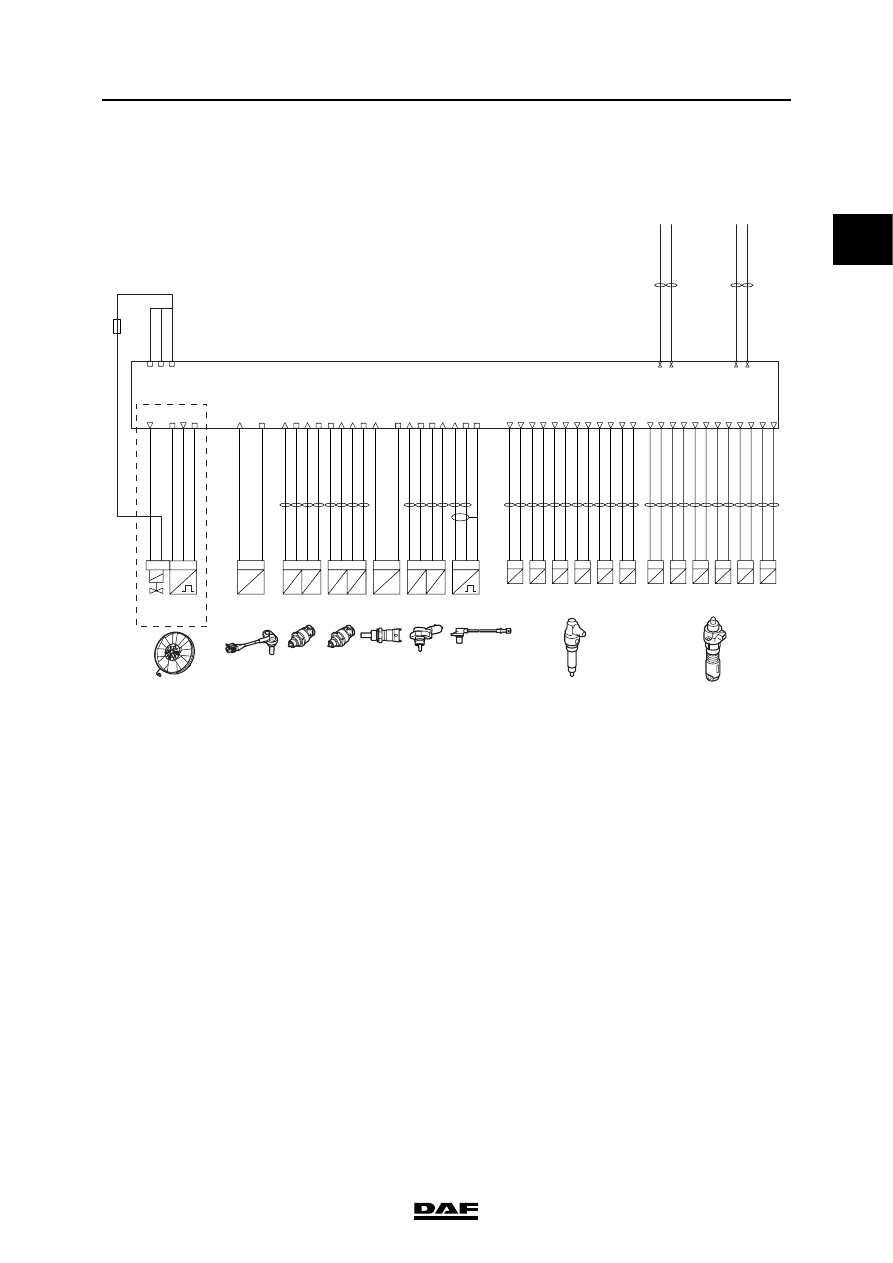DAF XF105. Manual - part 102

1
©
200528
3-27
Control functions
DMCI ENGINE MANAGEMENT SYSTEM
XF105 series
3.13 ENGINE PROTECTION FUNCTIONS
The general task of this function is to limit the
requested quantity of fuel, related to the engine
speed, atmospheric pressure, coolant
temperature and other engine/vehicle conditions.
The controls ensure that the engine and drive
train are not mechanically and/or thermally
overloaded. The engine torque is limited or
reduced for this purpose. The protection
functions can be sub-divided into two groups:
-
Thermal engine protection
-
Mechanical engine protection
Thermal engine protection
1.
Cooling problem detection
2.
Over-heating protection
3.
Exhaust gas temperature limitation
Mechanical engine protection:
1.
Turbocharger protection
2.
Height correction
3.
PTO/engine speed control torque limiting
4.
Fuel temperature correction
5.
Engine oil pressure protection
6.
Engine speed protection when engine is cold
7.
Excess engine speed detection
i401009
D965
1 2
high-side
low-side
Cyl.6
B136
1 2
high-side
low-side
Cyl.5
B135
1 2
high-side
low-side
Cyl.4
B134
1 2
high-side
low-side
Cyl.3
B133
1 2
high-side
low-side
Cyl.2
B132
A3
A7
A12
A23
A24
A15
A8
A19
A16
A4
A11
A20
1 2
high-side
low-side
Cyl.1
Pump units
B131
1 2
high-side
low-side
Cyl.6
B426
1 2
high-side
low-side
Cyl.5
B425
1 2
high-side
low-side
Cyl.4
B424
1 2
high-side
low-side
Cyl.3
B423
1 2
high-side
low-side
Cyl.2
B422
1 2
high-side
low-side
Cyl.1
Injectors
B421
4
pres.
F744
P
U
T
R
2 1
signal
3
signal
signal
ground
ground
oil
temp.
oil
temp.
F649
T
R
P
U
2 1
signal
ground
3 4
supply 5V
supply 5V
supply 5V
signal
shield
inlet
pres.
boost
4
pres.
F713
P
U
T
R
1 2
signal
3
signal
ground
fuel
temp.
fuel
N
5 1
supply 5V
signal
2
speed
fan
ground
T
R
1
signal
2
F566
F743
temp.
coolant
coolant
temp.
second
T
R
1
2
B335
oct.
fan
4
3
ground
signal
C16
C31
C36
C35
supply
supply
supply
C60
C61
C62
Vehicle
CAN2
low
Vehicle
CAN2
high
F
N
2 1
signal
return
3
F552
speed
crankshaft
A2
A8
A9
A22
A21
A14
A5
A18
A13
A1
A10
A17
C26
A34
A46
C25
A45
A41
C34
A42
C30
C29
C33
A38
A37
A27
A28
A30
A49
A50
A60
CAN2 low
CAN2 high
B53
B45
Vehicle
CAN1
low
Vehicle
CAN1
high
CAN1 low
CAN1 high
B35
B27